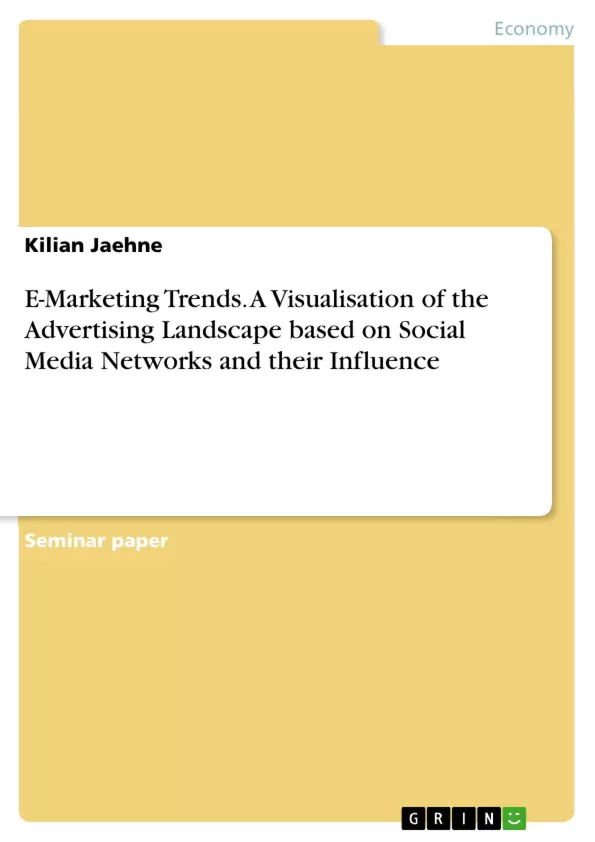This paper explores the role and responsibilities that user data plays in the market influence of larger social media companies.
The reason for these inquiries are the current market conditions in which large companies collect user data on a huge scale to create a profile of their users.
Of particular interest and complexity under the umbrella of the marketing strategy of a corporation is the topic of its digital presence. This focuses specially on all market participants, competitors and consumers as well as all persons, companies, and institutions that actively participate in the economic market through supply and demand by buying, selling, or exchanging goods or services. This digital presence plays nowadays a crucial role in our digitalised world.
Inhaltsverzeichnis (Table of Contents)
- 1. INTRODUCTION
- 2. MAIN PART
- 2.1 Transition from Offline to Online
- 2.2 Important Marketing Channels of Current Businesses
- 2.2.1 Search Engine Marketing
- 2.2.2 Organic Search
- 2.2.3 Sponsored Search
- 2.2.4 Google Shopping
- 2.2.5 Display Advertising
- 2.2.6 E-Mail Marketing
- 2.2.7 Affiliate Marketing
- 2.2.8 Mobile and Social Media Advertising
- 2.3 The Rise of the Tech Giants
- 2.4 Data Collection and Ownership of Data
- 2.4.1 Data Octopuses and Monopoly Positions
- 2.4.2 Monetization of Data
- 2.4.3 Algorithms and Process Optimization
- 2.4.4 Digital Heritage
- 3. CONCLUSION
Zielsetzung und Themenschwerpunkte (Objectives and Key Themes)
This paper examines the role and responsibilities of user data in influencing the market power of major social media companies. The analysis delves into the current market dynamics where large companies collect massive amounts of user data to create detailed user profiles.
- The transition from offline to online marketing channels.
- The role of data collection and ownership in the influence of large social media companies.
- The impact of algorithms and process optimization on user experiences.
- The ethical and social implications of data collection and utilization.
- The potential for data to shape a user’s “digital heritage.”
Zusammenfassung der Kapitel (Chapter Summaries)
- Introduction: This chapter sets the context for the paper, highlighting the growing significance of online marketing and social media in the modern business landscape. It outlines the key areas of investigation, focusing on the influence of user data and the responsibilities of large tech companies.
- Main Part: This section delves into the core aspects of the study, examining the evolution of marketing channels from offline to online, the emergence of tech giants, and the implications of data collection practices. It also analyzes specific marketing channels, including search engine marketing, organic search, sponsored search, Google Shopping, display advertising, email marketing, affiliate marketing, and mobile and social media advertising. The chapter further explores the implications of data octopuses, the monetization of user data, the role of algorithms, and the concept of digital heritage.
Schlüsselwörter (Keywords)
This paper focuses on the key themes of e-marketing, social media marketing, data collection, user data, algorithms, data monetization, digital heritage, and the ethical implications of data usage in the context of social media platforms.
- Quote paper
- Kilian Jaehne (Author), 2021, E-Marketing Trends. A Visualisation of the Advertising Landscape based on Social Media Networks and their Influence, Munich, GRIN Verlag, https://www.grin.com/document/1150290



